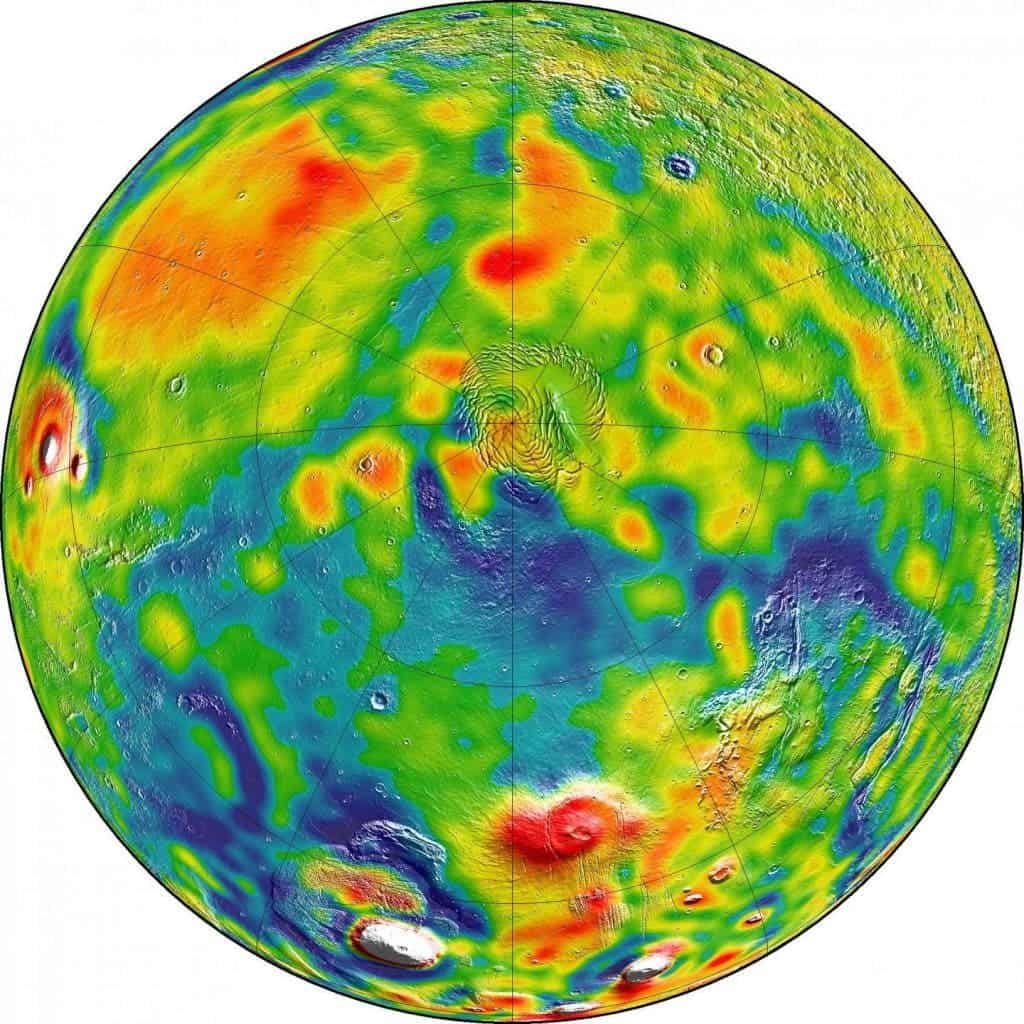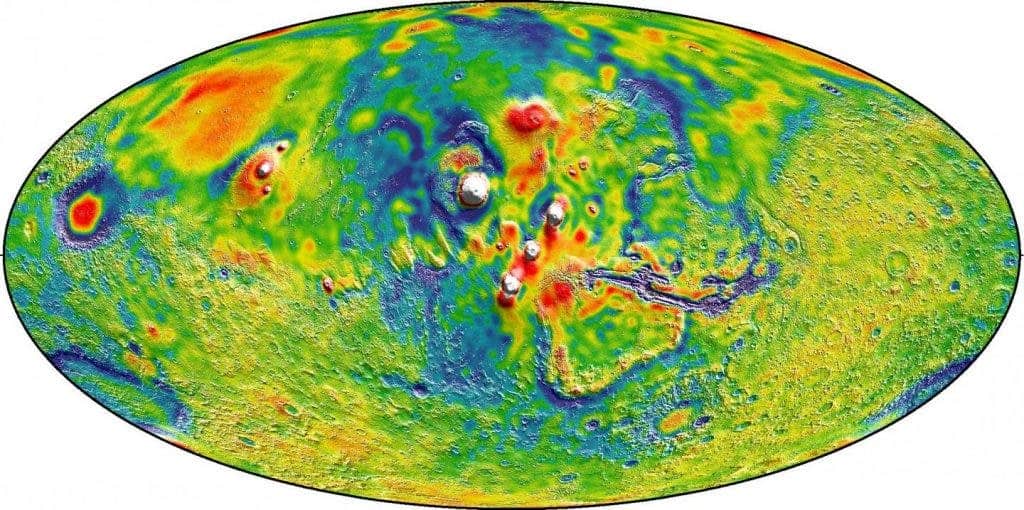A new gravity map of Mars is offering researchers the possibility to study the geology of the Red Planet. The map, created with data from three of NASA’s spacecraft is the most detailed to date, offering an unprecedented glimpse inside our planetary neighbor. It highlights volcanoes, plateaus, and can even show water once flowed on Mars.

A planet’s gravitational field isn’t uniform – some areas are denser than others, which means they exhibit a so-called gravitational anomaly. A location with a positive anomaly exhibits more gravity than the average, while a negative anomaly exhibits a lower value than the average. For instance, a massive iron deposit or a volcano would be visible on this map, as would a part of the crust with a lighter composition. In other words, white and red areas on this map are positive gravitational anomalies, while blue ones are negative anomalies.
“Gravity maps allow us to see inside a planet, just as a doctor uses an X-ray to see inside a patient,” said Antonio Genova of the Massachusetts Institute of Technology (MIT), Cambridge, Massachusetts. “The new gravity map will be helpful for future Mars exploration, because better knowledge of the planet’s gravity anomalies helps mission controllers insert spacecraft more precisely into orbit about Mars. Furthermore, the improved resolution of our gravity map will help us understand the still-mysterious formation of specific regions of the planet.”
The map wasn’t easy to make. NASA monitored small changes in the orbits of three craft currently circling Mars — Mars Global Surveyor, Mars Odyssey and the Mars Reconnaissance Orbiter — for more than a decade to make the new map. It was a tricky calculation, relying on the slight differences in Mars’ gravity which changed the trajectory of the NASA spacecraft orbiting the planet. These small fluctuations were enough to construct the map, and the improved resolution is very important, as it allows the exploration of some finer features from the surface, such as ancient river valleys. It also provides better information for future missions to Mars and reveals some information about the deeper areas of Mars.

“With this new map, we’ve been able to see gravity anomalies as small as about 100 kilometers (about 62 miles) across, and we’ve determined the crustal thickness of Mars with a resolution of around 120 kilometers (almost 75 miles),” said Genova. “The better resolution of the new map helps interpret how the crust of the planet changed over Mars’ history in many regions.”
This new map also confirms the conclusions of previous efforts: Mars has a liquid outer core of molten rock. The new gravity solution improved the measurement of the Martian tides, which can enable geophysicists to construct better internal models of Mars.
Similar maps are routinely constructed for Earth, though of course at a much better resolution and scale. Gravity maps are useful for mineral and oil explorations, because they allow prospectors to identify the interesting geological structures. Micro-gravity can even be used for the detection of underground voids, and similar maps have also been constructed for the Moon.
Genova, who is affiliated with MIT but is located at NASA’s Goddard Space Flight Center in Greenbelt, Maryland, is the lead author of a paper on this research published online March 5 in the journal Icarus.


